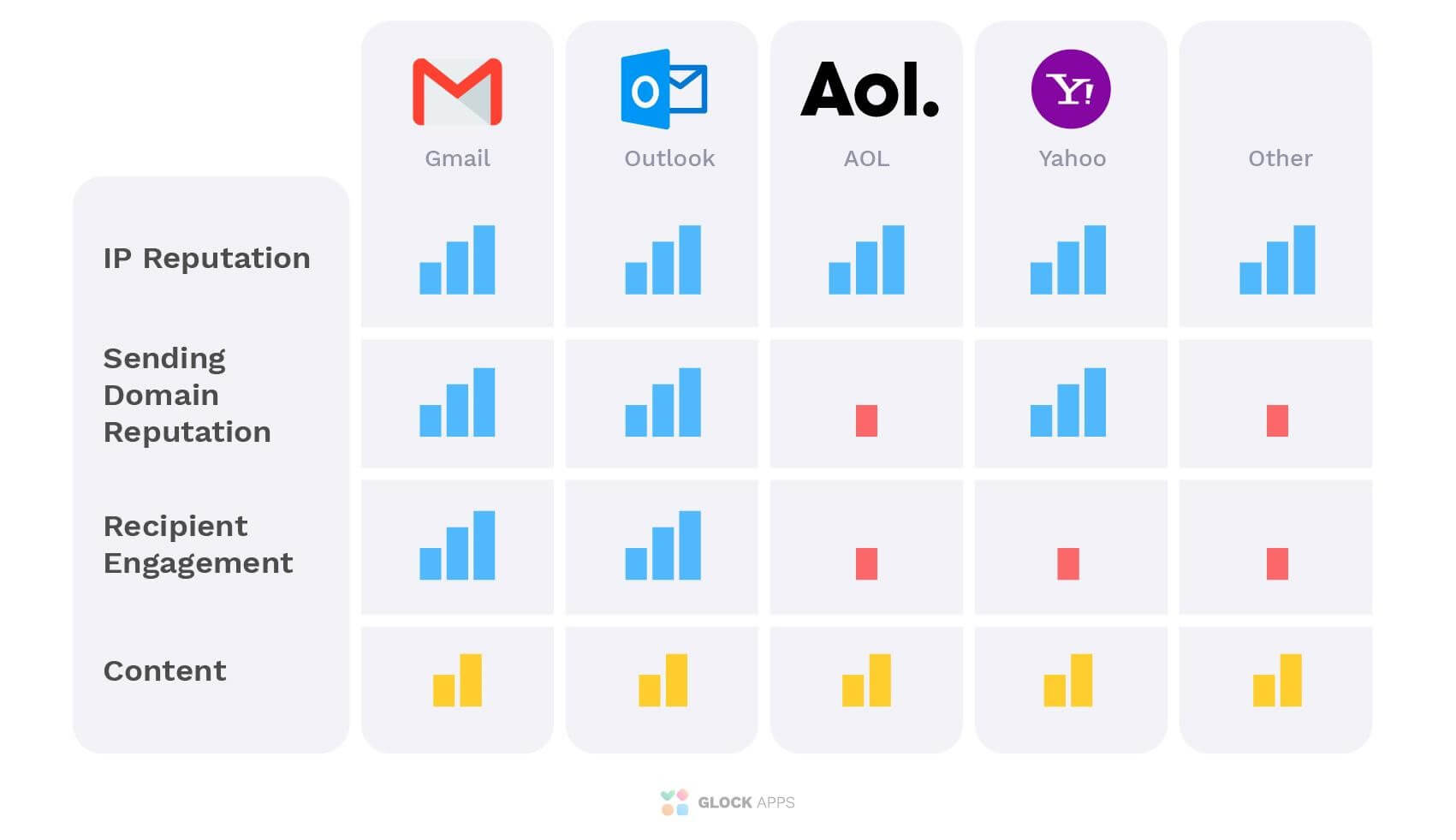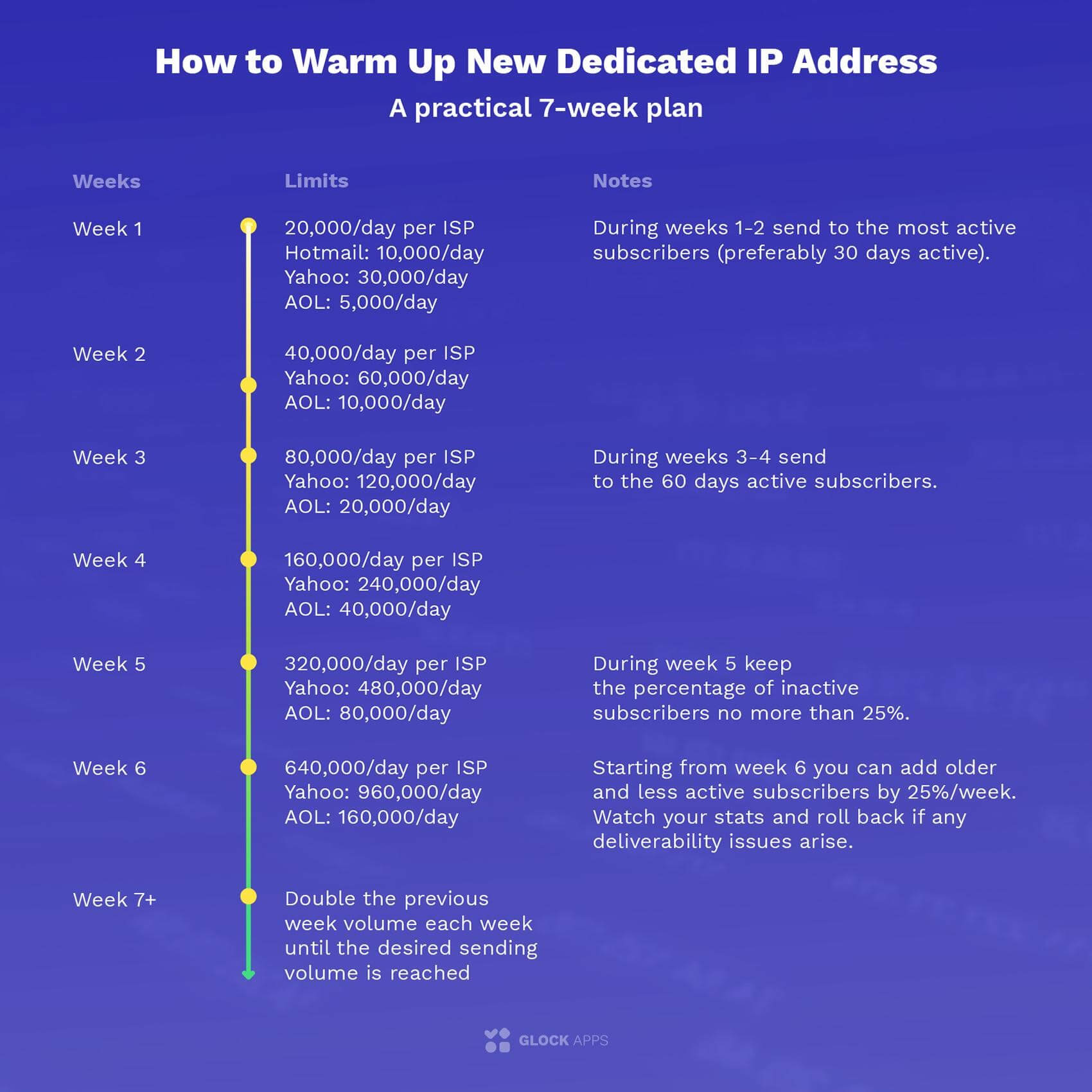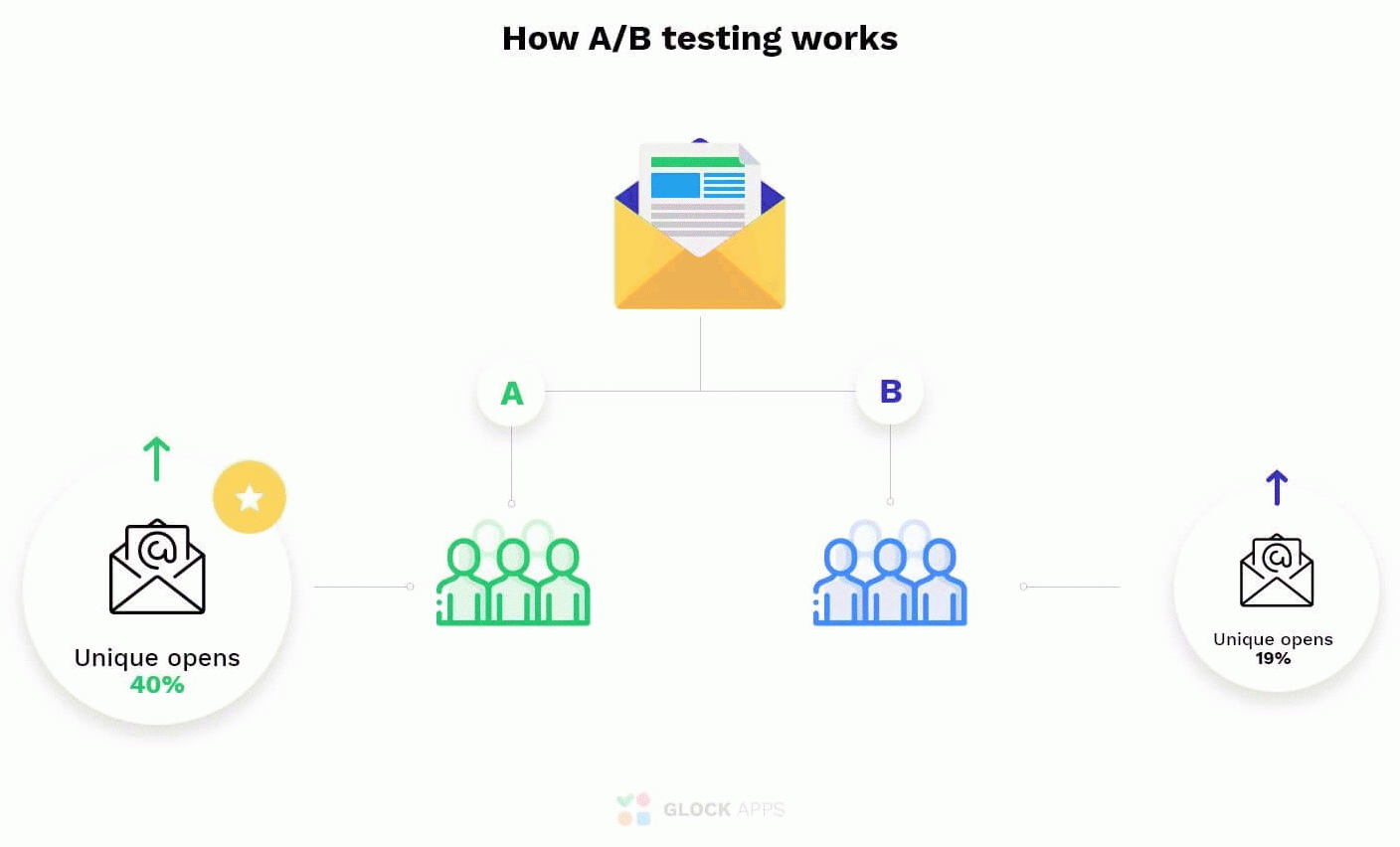Emails Go to Spam: 6 Surefire Tips to Improve Email Engagement
Email is pointless if the recipient doesn’t interact with it. We want our customers to engage with the message we’re sending and ultimately convert. So if your emails go to spam, there’s a chance that mailbox providers put you there because your emails weren’t engaging enough previously. In this article, we’ll explain what engagement is, how to measure it, and improve your messages to get them out of a spam folder.
What is Email Engagement?
Email engagement is how recipients interact with your email. Email engagement can be both positive (open rate) and negative (complaint rate). These metrics are vital not only for marketers but for mailbox providers as well. They look at engagement metrics to see if the email that came through is desirable or not and if it is not – next time it may land in spam.
Here are 8 engagement metrics you should know about:
Open rate – the number of recipients who have opened an email out of all the emails delivered.
Click-through rate – the number of people who have clicked a link in an email out of all the emails delivered.
‘This is not spam’ rate – a metric that shows how many people have received your emails to their spam folder and did not consider your emails as spam. The low rate could be read in both negative and positive ways: it could mean that your emails are getting into the inbox, not the spam folder; or, if the spam placement is high, it could mean that the recipients are not interested enough in your emails.
‘Replied to’ rate – means that the recipient has replied to the email. The rate is the number of people who have replied to your email out of the total amount of emails sent.
Sharing and forwarding – strong positive engagement metrics that show how many emails were forwarded to or shared with other people out of all emails sent. High sharing and forwarding metrics are a good indicator of your content relevance.
‘Delete before reading’ – the number of emails that were deleted without being opened and read, out of all the emails sent. A high ‘delete before reading’ rate could mean a lack of interest in your content, or emailing to the wrong audience, in which case you might want to revise your email list acquisition practices.
Complaint rate – the number of recipients who complained about your email out of all emails delivered. This is a strong negative metric that could mean several things, for example, you didn’t provide the unsubscribe link, or you have issues with opt-in email subscription and people did not expect or want an email from you.
Unsubscribe rate – the number of people who have unsubscribed from your emails out of all emails delivered. It can also have positive and negative aspects. For example, if your emails are getting to the Inbox and the unsubscribe rate is low – that’s good news. But if the unsubscribe rate is low and emails are going to the spam folder – it just means that they are not being read.
It is always best to look at all the metrics to see the big picture, because, as we can see, some metrics can be interpreted as good or bad.
Read more: Understanding Deliverability Metrics
But not marketers alone look at engagement, as mailbox providers also use them to judge senders.
What ISPs Look at Engagement
ISPs use engagement metrics to determine whether your email is desirable for the recipient or not. Google looks at an email engagement at a high level. Others follow Gmail’s lead – primarily Microsoft and Yahoo. So if your emails go to spam in these large providers, engagement can be it. To improve deliverability and stop Gmail from blocking your emails, focusing on engagement is essential. As to all other global and regional providers, they may not yet pay that much attention to email engagement when making Inbox or spam decisions. There are a few reasons why:
- They are too far behind on spam filtering technology to build their own solution. Google, Microsoft, and Yahoo are very large networks and have a lot of data at their disposal to make an informed decision.
- It takes a lot of financial and technical resources to build something and do it correctly at that scale.
- They end up using third-party filtering solutions like Cloudmark, Barracuda, Spam Experts, etc. So, essentially they are outsourcing their spam filtering technologies.
The importance of different elements for Inbox placement
When it comes to engagement, Google is by far the most advanced ISP. They look at many data points to decipher whether the message should go to an Inbox or to a spam folder. They look at how often a user logs into their mailbox, how much time they spend there, how they navigate between the different tabs and folders. After Google, Microsoft and Yahoo are taking engagement signals into consideration. So when asking “Why my emails go to spam?”, you should start thinking about your engagement.
Read also:
Avoiding Gmail Spam After the Latest Security Update
How I Got Out Of Gmail’s “Promotions Tab Jail”
A Practical Guide On How to Get Out of Gmail’s Promotions Tab
Engagement and Sender Reputation
What sender reputation has to do with engagement? These two are interdependent. Low engagement can reduce your reputation, and high reputation means that you receive enough positive engagement.
Giants like Gmail and Outlook provide you with free tools to help you understand what is your reputation with them as a mailbox provider.
Gmail postmaster tools give you access to several dashboards: Spam Rate Dashboard, Domain and IP Reputation Dashboard, Feedback Loop Dashboard (only for senders who implemented the Gmail Spam Feedback Loop), Authentication Dashboard, and Delivery Errors Dashboard.
Outlook.com Smart Network Data Services (SNDS) provide you with an overview of your IP addresses and shows relevant statistics like approximate inbox rate, complaint rate, and trap hits.
An example of Outlook.com SNDS report
And, you can also use third-party tools like GlockApps to track your Inbox placement, IP reputation, see if your emails are authenticating properly, and more.
What apart from using mailbox providers’ tools, what can you do to keep your reputation high and your recipients engaged?
Tip #1. Warm up IP
If you use a new dedicated IP to send emails, it is necessary to warm it up before blasting large amounts of emails. Why is it important? Because when IP is new and fresh, it has no reputation and you need to build it up bit by bit. If not, sending an email blast may cause spam placements as mailbox providers can mistake you for a spammer. Below you can see a step-by-step guide to warming up an IP.
Tip #2. Ask for Permission
If you’re asking “Why my emails go to spam” and don’t follow this one, now is the time to rethink your mailing habits, because permission-based marketing is a best practice every email marketer should follow. In many countries, it is a law to ask for permission to send marketing emails, but even in those where it is not, it is still better to do so. And here is why: if you start sending emails that the recipient didn’t ask for, they may mark the email as spam or write a complaint about the message. Either way, it is going to leave a mark of a negative engagement that can eventually put you into spam or get your emails blocked altogether.
Tip #3. Add Unsubscribe Link
It is a best practice that cannot be overlooked. Even though unsubscribing means email list shrinking, it is always good to let go of people who are not interested in your emails. Moreover, not providing the link can result in a surging complaint rate that will negatively affect your engagement and sender reputation.
Tip #4. Use A/B Content Testing
An A/B testing (or split testing) is a great and somewhat underestimated tool in email marketing. When you conduct a split test, you send out an email with two different content versions or an email with two different subject lines, CTAs, etc. They are delivered randomly to different halves of your recipient list. After that, an analysis takes place to see which version performed better and had a higher engagement with recipients.
Benefits of Split Testing:
- Email campaign optimization
- Data from real recipients
- Email improvement before the campaign starts
- Better email engagement level
- Higher conversion rate
Just by using an A/B testing companies can shed light on their customer’s preferences, the effectiveness of their email design and content, and minimize the risk of launching a high-stakes campaign.
Analyze Email Campaigns Over Time
If you don’t understand what your audience likes, every email campaign sent will be a random hit or a miss. To mitigate this risk apart from testing and comparing campaigns before sending, it’s important to book a time to analyze the work you have already accomplished.
Comparing subject lines, templates, click-through rates, conversions and the content types that got you the most open rates will give you a precise understanding of how to build your next campaign and what practices won’t work for your target audience.
Tip #5. Test Email Templates
There are debates going on around whether an email should be long or short, bright HTML, or simple text. And it widely depends on your product and your audience. But here we’d like to say a few words on why a simple email might work better.
Sometimes it’s easy to lose the focus of an email because we really want our message to stand out in the Inbox of our recipients. What actually creates value in your email? Is it the logo? The layout? The answer of course is the content. Complex layouts, logos, and showy backgrounds can create too much noise and make it harder for the reader to grasp the message behind all the fluff. Rather than investing in fancy templates, invest in human relationships with your recipients.
Benefits of a Simple Template:
- Authentic and personal
- Engaging
- Straight to the point
- No distractions
Simplifying an email template can increase email engagement by up to 29%. To see that it really works, create two copies of your outgoing email with the same text but different templates and run a split test. The result may be surprising!
Tip #6. Spice up with Gifs
Skeptical about using GIFs in email marketing? Many internationally known companies including Nike and Netflix do it all the time. Split testing shows that using GIFs can improve your email engagement by up to 40%. Unlike heavy videos or suspicious attachments that will make your emails go to spam, gifs are short, fun, and bright elements that make work for many businesses.
Benefits of Using GIFs:
- Grab attention. Nothing grabs attention like a moving picture.
- Supported by major email providers. Embedded videos are impossible to use in emails so GIFs bring a video-like experience into your email marketing campaign.
- Highlight important parts of your message. It’s easy to put emphasis on a phrase or paragraph with an appropriate animation to bring the reader’s attention to a specific point that you’re making.
- Bring out emotions. Just like how a short video can elicit an emotional response in a viewer, so can a well-designed GIF animation.
GlockApps has also increased engagement using GIFs with our email Inbox expert – Gappie. He instantly notifies you about any changes or malicious influences impacting your email campaign through Telegram or Slack and routinely checks your domain, IP, authentications, and much more!
GlockApps Spam Testing for Marketers and Agencies

Test your email placement
Scan your emails through all the major spam filters before you send them.
Improve your deliverability
Get actionable tips for improving the delivery rate of every email you send.
Increase your revenue
Improve your overall email performance by delivering more emails to the inbox.










